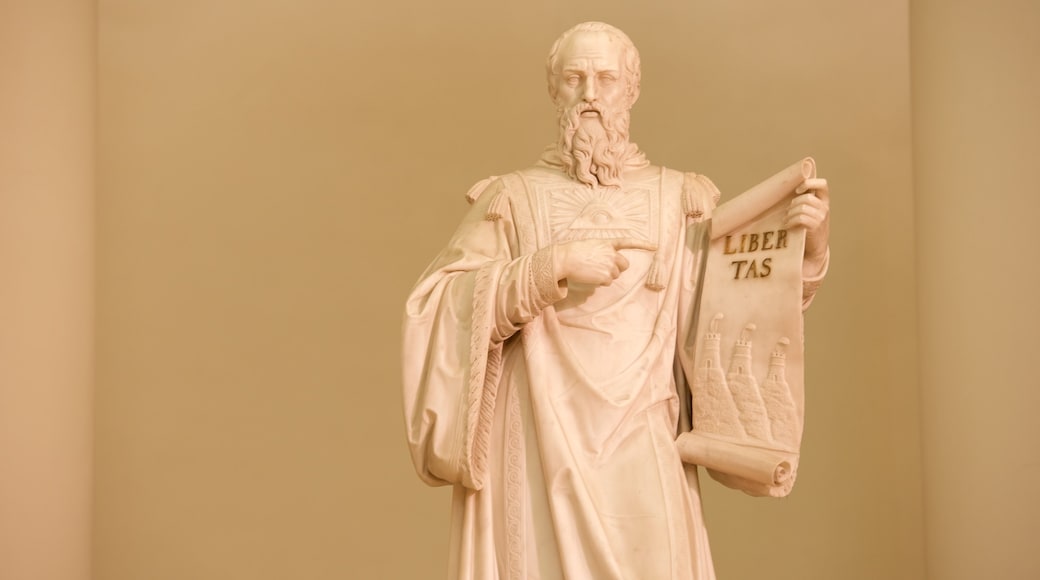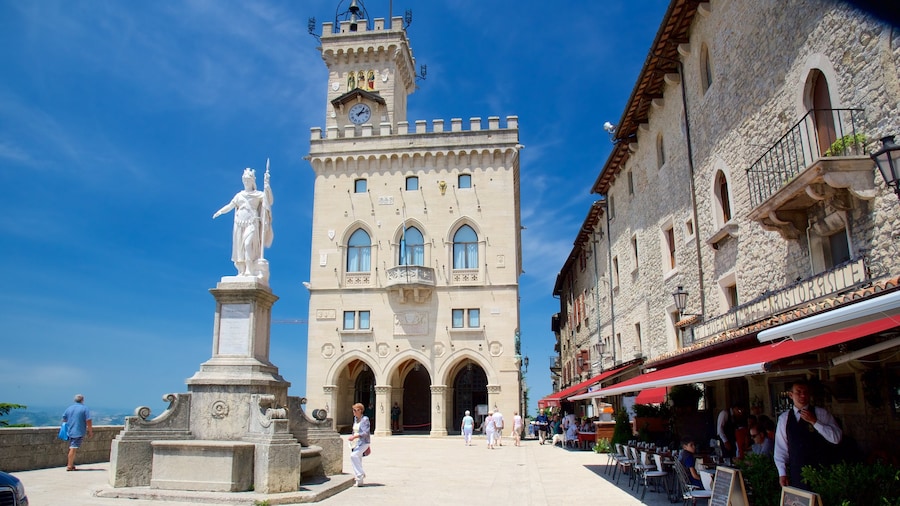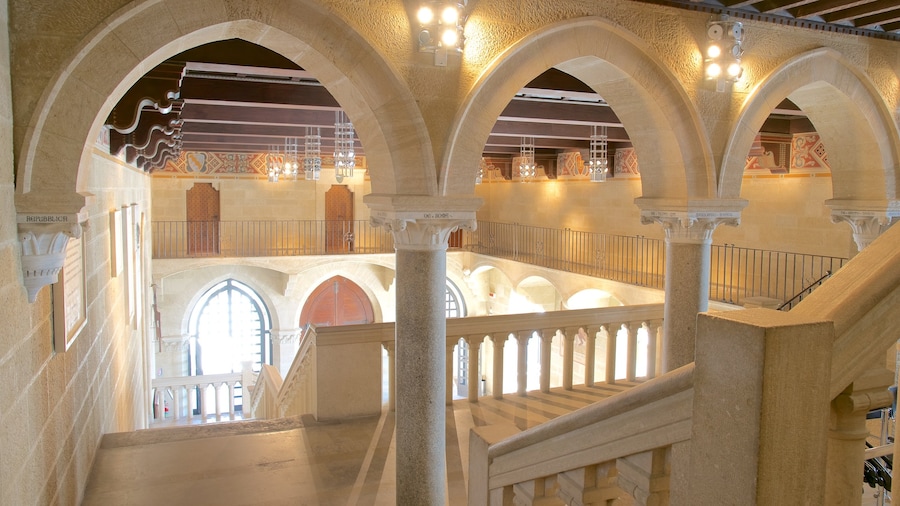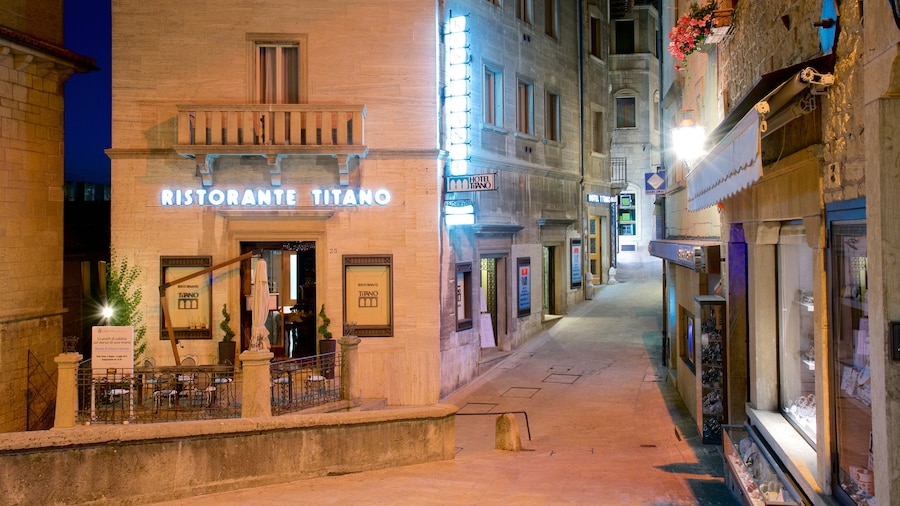San Marino’s most revered church has a striking neoclassical façade and houses the relics of the nation’s founding father.
The Basilica of San Marino is one of San Marino’s most historically and religiously important churches. See this architectural masterpiece that showcases the talents of Bolognese architect Antonio Serra. The Basilica of San Marino dates back to 1825 and took 13 years to construct. It stands on the grounds of an ancient 5th-century church.
The church’s exterior is heavily influenced by the neoclassical architectural style. The portico’s eight imposing Corinthian columns evoke the image of an ancient temple. Look above the columns at an inscription in Latin reading Divo. Marino. Patrono. Et Libertatis. Avctori. Sen. PQ. It means St. Marinus, father of the country, the bearer of freedom for the Senate and the People.
Step inside to discover three naves flanked by a series of Corinthian columns. Look for statues that portray Christ the Redeemer and the 12 Apostles. Note the gleaming mosaicked floor and the detailed ornamentation of the domed ceiling. Look for the 17th-century throne of the Captains Regent.
The church has seven altars, including one dedicated to Mary Magdalena. Adorning this altar is a painting called Noli Me Tangere (Touch Me Not) by Elisabetta Sirani. Go to the main altar to see an urn that holds the relics of St. Marino, the founder and patron saint of San Marino. Notice the sculpture of the saint by Italian Adamo Tadolini.
Located on Piazza Domus Plebis, the Basilica of San Marino is just a short walk from Liberty Square and other major city attractions. Adjacent to this church is the 16th-century Church of St. Peter (Chiesa di San Pietro). Peek inside to see a sparkling marble altar and a statue of St. Peter by Italian sculptor Enrico Saroldi.
Both the Basilica of San Marino and Church of St. Peter are open daily and are active places of worship. Be quiet and respectful when visiting.



















